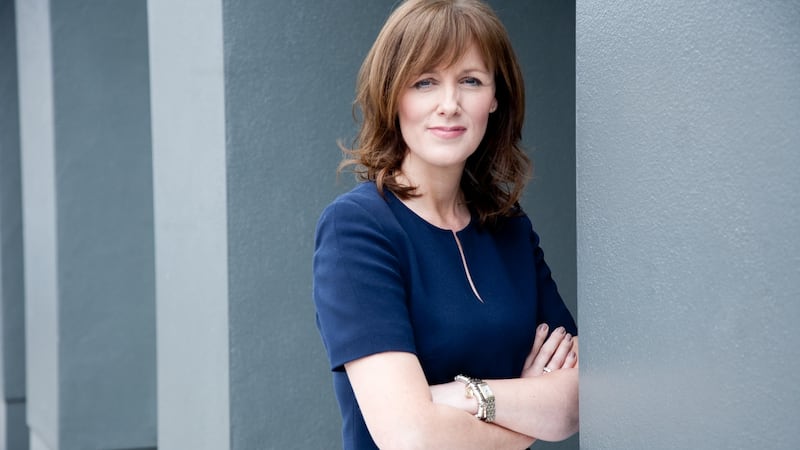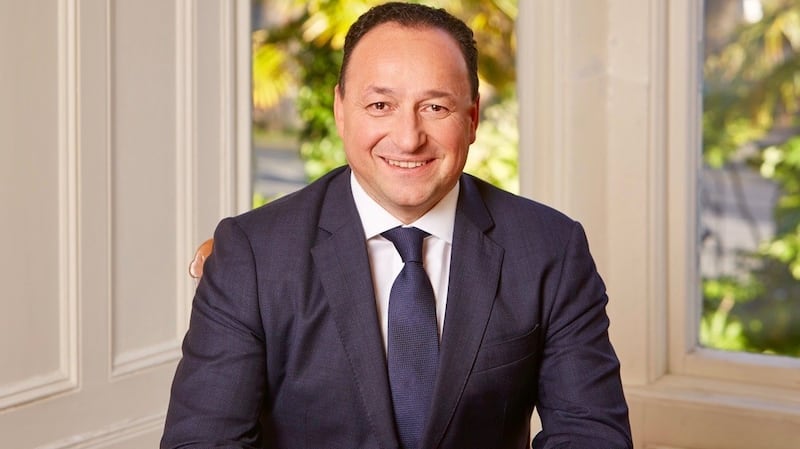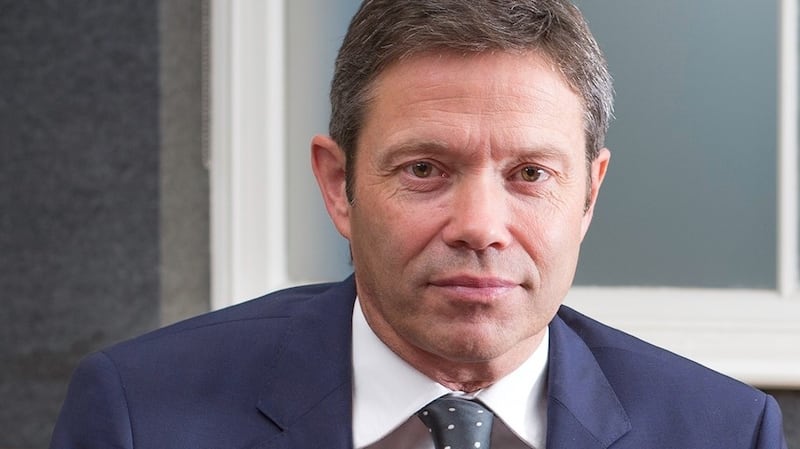Marian Finnegan, managing director residential, Sherry FitzGerald
2020 has been a perplexing year in terms of housing. The year began with a notable boost to demand, potentially underpinned by positive news on Brexit. The onset of Covid-19 and the subsequent lockdown naturally slowed activity from March to June. However, once the branch network reopened on June 8th, we saw an uplift in demand for all property. Properties that had fallen through during the lockdown were re-agreed, and in most instances over the asking price.
Despite the fallout from the pandemic, residential property prices have demonstrated a remarkable degree of resilience. Prices have been underpinned by the release of pent-up demand following the spring lockdown and by the ongoing supply-side crisis, which has been exacerbated by Covid-19. Buyer sentiment remains firm, evidenced by the record high level of mortgage approvals recorded in October. Over the course of the year we saw modest price inflation return, with the rate of price growth currently at its strongest level in over two years.

If I had one wish for housing in 2021, it is that all stakeholders would listen to alternative perspectives
The Covid-19 pandemic is reshaping buyer demand in the Irish housing market. Demand is very robust for family homes in well-located areas, with the most valued attributes being space, access to a park, garden and a home office. A shift toward more remote working has also boosted demand for houses in “walk-in” condition, which are attracting a premium in the current climate due to increasing costs of construction works/scarcity of suppliers.
The “starter home” to mid-market value properties have also seen strong growth, particularly in the new homes sector, reflecting pent-up demand from first-time buyers and savings from the enhancement to the existing Help-to-Buy relief.
If I had one wish for housing in 2021, it is that all stakeholders would listen to alternative perspectives and work together to develop much more collaborative and imaginative solutions to deliver decent and affordable homes for all our people.
Keith Lowe, managing director, DNG
DNG, like many agents, is recording particularly high levels of sales over the last number of months, especially for homes priced over €1 million. A surprise in an extremely difficult year, it's a very reassuring show of confidence in the property market.
However, these recent elevated sales levels belie the fact that there will be 25 per cent fewer houses sold this year than last. Property prices fell 3 per cent during the first lockdown in Q2, but recovered quickly by slightly more than that by the end of Q3. This can be explained by pent-up demand from a large cohort of buyers who could neither view nor buy houses during the first lockdown. New homes sales and prices have remained fairly constant with the exception that more and more schemes are being sold to private rented sector buyers for long-term rental and social housing, leaving less homes for individual buyers to purchase.

The number of house sales next year should recover to 2019 levels, which is still very low by international standards
Covid-19 has had a very real effect on peoples’ lives and attitudes. The experience of living in a confined space with no gardens took its toll on some. Likewise, some empty-nesters in large houses decided to “right-size” to more manageable accommodation. Others moved outside of urban areas as working from home became a genuine option. The CSO has reported the highest level of Irish nationals returning home than at any time in the last 13 years, which is likely to be as a consequence of Covid-19 and Brexit.
We can expect a sharp rise in buyers purchasing residential properties for investment as those with significant savings start to be charged negative interest rates from their banks for monies on deposit, a move unprecedented in Ireland.
The number of house sales next year should recover to 2019 levels, which is still very low by international standards. A cohort will continue to hold off their selling decision until they feel it is safe. New homes construction numbers will surpass 2020 levels and are likely to hit 25,000 units in 2021, with many being bought by long-term investors rather than homeowners. However, I would anticipate that the balance will start to reverse back to home-buying from 2022 onwards.
Stephen Day, director, Lisney
The first six months of the year started with a steady opening three months. Then Covid-19 hit, bringing complete uncertainty and a general consensus that the market together with the economy was due a major shakedown. Those who renegotiated sale prices fared well as many sellers were rightly nervous they might not secure a sale down the line and therefore were keen to proceed, albeit with a discount. Equally, purchasers were nervous they would not secure finance for the same amount or at all.
Once restrictions eased in June there was a significant uptake across all sectors of the market, especially at the upper end where purchasers were prepared to throw the kitchen sink at buying the right family home, perhaps having spent significantly more time more recently in the wrong one. Any property with a view or a large garden was snapped up. The shortage of supply has remained a consistent theme of the last six months along with the large influx of London buyers looking to relocate home. Many of these buyers had a five-year plan to return to Ireland, and Brexit and Covid seemed to accelerate these plans.

Although the market is ultimately driven by consumer confidence, it remains very price-sensitive
Areas that have seen the most growth are along the coast. Traditionally, Dublin 4 would outpace Monkstown and Sandycove. Not in 2020. Lisney estimates that 80 per cent of all residential transactions above €2.5 million are cash buyers which, although unsustainable, shows no sign of abating in the short term. We would expect the first six months of 2021 to remain very strong, even though considerably more stock should come to the market. The latter six months of 2021 have the potential to have minimal growth as buyers will be satisfied by more supply.
Although the market is ultimately driven by consumer confidence, it remains very price-sensitive, and the properties quoting the most realistic asking prices continue to garner the most attention and achieve the best prices. The corollary of this is low levels of interest when a property is overpriced in the first place.
TJ Cronin, vice-president, Society of Chartered Surveyors Ireland (SCSI)
The resilience of the property markets and the adaptability of the people working in the sector have been key takeaways this year. Despite predictions that property prices would drop significantly, they have held up well, with less than 10 per cent of deals being renegotiated in lockdown one. Demand for new and second-hand properties far exceeds supply.
Of course, the shift to home working has led to a noticeable increase in the demand for suitable properties – home office, good broadband, nice gardens etc – from purchasers moving out of larger urban areas as well as people returning from abroad.

Affordability is a major issue and we would like to see the establishment of a commission on housing
This trend has led to increased activity all over the country, and it looks set to continue. But lack of supply – some of it caused by people deferring decisions to trade up or down – and the impact of lockdown two has led to a decline in activity in recent weeks.
We need to address the lack of supply as a matter of urgency, which is why the SCSI has called on the Government to embark on a major public sector housebuilding programme led by local authorities. This would help get annual house completion figures up to the 30,000 to 35,000 units required while also taking advantage of the softening in construction costs caused by Covid-19.
Affordability is a major issue and we would like to see the establishment of a commission on housing – as set out in the Programme for Government – to review issues such as the high costs of servicing land, utility connections as well as the tax treatment of new housing. VAT makes up 12 per cent of the total cost of a new home here, while in the UK there is no VAT on new houses.
Barring major economic shocks – from third and subsequent waves and a no-deal Brexit – most of the chartered agents I’ve spoken to believe the property market should remain relatively steady, with some slight reductions in the first half of 2021 followed by a levelling-off or modest price increases in the second half of 2021.
David Cantwell, director, Hooke & MacDonald
The move away from city living is greatly exaggerated. It's a temporary phenomenon to a large extent. It became necessary for many people due to Covid restrictions and will remain so for some people, but the vast majority have a desire to return to being close to places of work, leisure and social contact.
Early indications are that this will become increasingly evident in the year ahead, with enquiries for apartments already increasing in city locations for rental and purchase. The biggest constraint is build cost viability.

The outlook for the residential market in 2021 is very promising, especially for the new homes sector
While the first half of the year was negatively impacted by the Covid lockdown, the second half witnessed buyers coming out in force, with first time buyers to the fore and making up almost two-thirds of all purchases. Shortage of stock was the main problem. It was interesting to see that, although three-bedroom houses were in most demand, four-bedroom houses increased in popularity, mainly due to the desire of some people to be able to use the fourth bedroom as a home office/study.
Prices for new homes remained fairly static despite all the additional build costs caused by ever-increasing compliance regulations. The construction industry reacted very well to the changing scenario, implementing extensive site safety regulations and yet achieving end-of-year completions of nearly 20,000 new homes, contrary to most predictions.
It was good to see the continued success of the private rental sector (PRS) investment market as well as the expansion of the Approved Housing Bodies’ acquisitions and build programmes. Both are vital for supply of stock, mainly apartments, into the rental market. They also provide vital infrastructure for the country for the next 50 years and more.
The outlook for the residential market in 2021 is very promising, especially for the new homes sector, with first-time buyers likely to be very active, and with completions likely to exceed 23,000 homes. While still short of demand, it would represent an outstanding recovery considering all the delaying factors of the past year.
Pat Davitt, chief executive, IPAV
The pandemic and lockdown made 2020 unusual, but in terms of property it was a predictable one, with stock scarce, many purchasers self-financed and buying without recourse to a mortgage, interest rates as low as they have ever been, and more competition in the mortgage market. All the ingredients needed to keep the market trading and buoyant were there.
It’s unfortunate that the Central Bank still believes in a one-cap-fits-all approach with its macro prudential mortgage lending rules. These rules are preventing lower-paid workers in particular from acquiring a home even though they could afford to repay a mortgage. Such people will likely never own a property and unless governments into the future make major changes to our national pension policy, they will have to continue renting into pension age and then, potentially, face homelessness. It should be a source of outrage that young people are forced to pay substantially more in rent over the cost of servicing a mortgage.

We will see more applications for mortgages and hopefully home ownership rates going up again
When the Covid-19 ban on evictions expires there will be rent increases. As time moves on and institutional landlords gain more of a foothold in the rental market, tenants will see few advantages. Decisions impacting rents will be made far away from Ireland.
If the pandemic passes and we don’t hit another bump on the road, property prices, I believe, will increase in 2021, possibly by as much as 5 to 10 per cent. The after-effects of the Brexit bump will be positive for the Irish property market. We have an undersupply of property and, regardless of what economists and bankers say, the old story of supply and demand is what determines prices, not wild predictions such as those we saw earlier in 2020.
We will see more applications for mortgages and hopefully home ownership rates going up again. More stock will slowly come back to the market as property owners affected by Covid payments come back to work and can afford again to draw down mortgages and move on with their lives.
The announcement that Home Building Finance Ireland (HBFI) will give bigger loans to smaller developers, having secured agreement from the European Investment Fund which will guarantee half the credit risk, is bound to help with new stock.
Angela Keegan, managing director, MyHome.ie
This time last year, no one could have predicted what was in store for 2020, yet ironically the same old issues of supply and demand are dominating the market regardless. Clearly, Covid-19 has reduced the supply of housing, as construction activity stalled for most of Q2 and anxious vendors held off on selling. This led to rising prices as homebuyers' commitment to purchasing remained buoyant. Meanwhile, interest in the market is at an all-time high, with traffic on MyHome.ie hitting unprecedented levels during the lockdown.

The early part of 2021 will clearly be dominated by concerns over supply and demand
Interestingly, we saw rising prices replicated in most middle- and high-income countries as the pandemic took hold – the G7 saw an annual house price increase of 5 per cent in Q2. This happened for three reasons: central banks have cut interest rates, making it easier to borrow money; governments have preserved household incomes with a range of income supports, furloughs and subsidies; people want more from their homes as they prioritise remote working, and they are willing to pay for it.
Across Ireland, we are seeing evidence of the increased trend in remote working as people move away from cities and towards attractive rural areas. Searches for “cottages” have doubled year on year. Meanwhile, searches in tourist hotspots have soared. For example, in west Cork property searches are up by 500 per cent, searches for property in Kerry are up threefold, while Wicklow searches have doubled.
The early part of 2021 will clearly be dominated by concerns over supply and demand, while we will continue to see changing home preferences as more people opt to work from home on a regular basis. The full economic impact of Covid-19 has not yet hit, so it will be interesting to see how the Government continues to support the economy.
The sooner the vaccine is rolled out the better it will be for all sectors of the economy – including the property market. Then, we can hopefully start to see sustained construction activity and a redress of the balance between supply and demand.
Guy Craigie, director, Knight Frank
The biggest surprise for both residential and new homes departments has been the level of overseas interest, particularly from Irish emigrants returning home but also from wealthy international buyers looking for a base in Ireland. Last year 13 per cent of our total sales were to this cohort compared to almost 25 per cent in 2020.

Following our Prime Global Cities Index for Q3 2020 showing a 0.3per cent fall in prime Dublin property prices in the three months to September, we believe prices have now stabilized. Looking forward we expect modest growth into the early part of 2021 as supply continues to outweigh demand and mortgage approvals remain at an all-time high. With the roll out of a vaccine imminent, we predict the supply of second hand homes to improve towards Easter next year, particularly as downsizers who may have been cocooning come back to the market.
New homes sales levels were well behind a normal spring market with buyers waiting to see what would happen to both property values and mortgage availability. As soon as in-person viewings recommenced in June we were met with a huge number of enquiries across all price points but particularly first time buyers looking to take advantage of the increased Help-to-buy rebates.
Whilst there had been predictions of values declining, we didn’t experience any drop off and in fact the lockdown and subsequent construction delays further compounded an already under-supplied market. Many developments have sold out and developers are releasing 2021 homes earlier to meet the demand.
Perhaps most interesting has been the strong demand for prime new homes, where we have agreed more than a dozen sales in the last quarter at values between ¤1.5million and ¤5million.
A surprisingly resilient local market matched by the increased numbers of expats looking to buy in Dublin has fuelled this demand and we expect that to continue next year.











